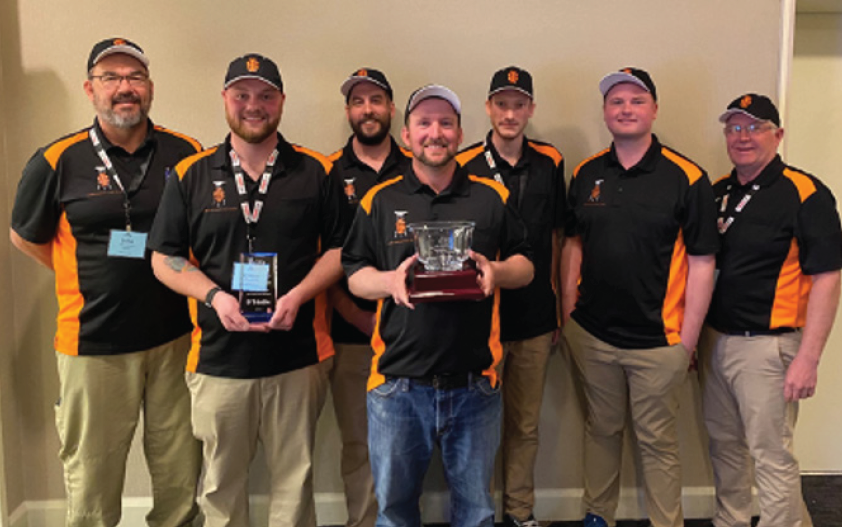Surveying Students Earn National Recognition by Placing Second in Annual Competition
July 22, 2022

A team of student surveyors from the Surveying Geomatics/Civil Engineering Technology programs along with two team advisors traveled to Washington D.C./Arlington, VA this past year March 30 – April 1, 2022 to participate in the NSPS 21st Annual Student Competition.
Overall, 13 teams were entered into the competition in two divisions: one for programs that offer Associates degrees and the other for programs that offer Baccalaureate degrees. The ISU team was one of seven teams entered into the competition division for the Baccalaureate degrees programs.
This year’s competition was composed only of field exercises, no report.
The first day of the competition was set up as a scavenger hunt event where the student teams were sent out to locate and identify as many historic monuments–worth varying competition points–as possible in a given time period throughout the District of Columbia. Though students were provided with metro passes, other modes of transportation in DC were allowed. Other competing teams used taxis, buses, scooters and bicycles besides the Metro. The team from ISU chose, for the most part, to hoof it because the monuments that they were most interested in finding were the most historically significant ones. Some, set in the year 1792, happened to be the most difficult ones to get to. As a group the ISU students decided to perambulate the monuments. Our distance tracing apps computed that we walked at least 17 miles that day.
The second day of the competition was comprised of three separate activities: leveling, running a traverse and performing a triangulation. To bring this into perspective, the monuments in the triangulation included the Washington Monument and the Jefferson Pier (pronounced pie-er, like radials of a pie). In addition, teams were encouraged to wear vintage period surveying attire. The team from ISU did not disappoint. For the leveling component, teams were asked to perform a three-wire level loop using vintage surveying equipment with the performances being graded for closure, balance of setups and field note organization. For the traverse, teams were asked to perform a 4-sided traverse using a Gunter’s chain and staff compass with the performances being graded for closure, accuracy of chained distances and accuracy of measured angles. For the triangulation, teams were asked to triangulate the position of an unknown position from two other known positions using a Wild T-2 theodolite with the performance being graded solely on the accuracy of the resulting coordinates. Given the coordinates of two monument points on which the student set up and turned angle on with reference to the Washington Monument, the objective of the triangulation procedure was to determine the coordinate position of the Jefferson Pier. This part of the competition required that the students perform hand computations for distance, direction and coordinate positions. According to the judges, the ISU team’s results were both accurate and precise.
On day three of the competition the points were tallied by representatives of the NSPS Young Surveyors Network with the results then being announced at the evening award ceremony by NSPS President Timothy Burch. Giving congratulations to the team from Ferris State University for taking first place in the competition, the team from ISU was elated to be awarded the second-place trophy. In retrospect, the ISU team surmised that they may have placed even higher had they rented bicycles or scooters for the monument search phase of the competition. Regardless, the significance of retracing the footsteps of surveyors such as Andrew Ellicott and the first African American surveyor Benjamin Banneker was of more importance to the students than the competition itself.
Besides the competition, the students enjoyed being able to network with members of the surveying profession at a national level, being able to learn more about the surveying history of Washington D.C. and being able to meet and network with students studying in surveying programs from around the country. An additional and unexpected highlight of the experience was that the National Park Service, at the request of the NSPS, opened the cover for us to view the little known and seldom seen Washington Mini Monument which is located in a subterranean area adjacent to the Washington monument itself. The mini monument was used as a model to the construction of the Washington Monument itself and was left intact and undisturbed. Overall, the competition was seen as a great experience and a proud moment for the team from ISU and we are already looking forward to next year’s NSPS conference. The ISU students and faculty would like to thank ISPLS for their continued support, it is greatly appreciated.
Categories:
